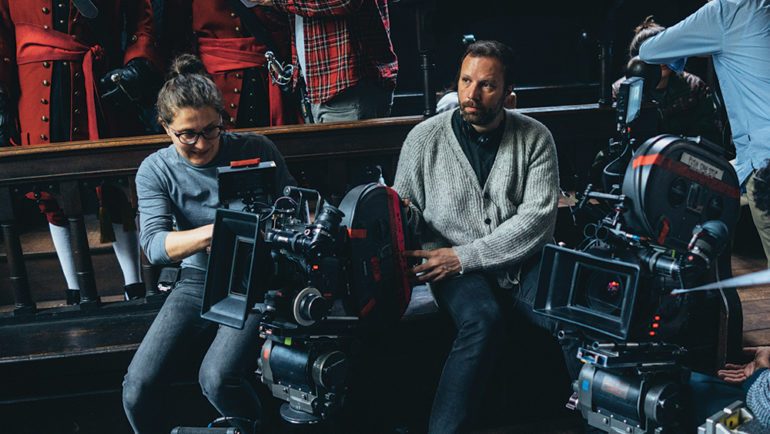How ‘The Favourite’ Director and Crew Defied Period Conventions
By Tim Gray
LOS ANGELES (Variety.com) – Director Yorgos Lanthimos continues to defy conventions with “The Favourite,” a funny and savage look at the court of England’s Queen Anne in the early 1700s.
“Period films are always challenging,” he tells Variety, “and with a limited budget, it takes a lot of work. So it was hard but fun.”
Lanthimos and his crew shot most of the film at Hatfield House in Hertfordshire. The helmer says that his behind-the-camera team came up with unusual solutions to create the right tone for the film.
Robbie Ryan, Cinematographer
“We shot on film, which is always my preference. And I asked Robbie to not use artificial lighting. I like to do that with all my films. It was either daylight or practical, which for this period meant candles. It was challenging, especially for the dark night scenes. We were using very wide-angle lenses, and the camera was moving quite a bit. In addition, we had to be very careful. Historical buildings must be protected, so there were rules about how many candles we could use and how close they could be to a tapestry or painting, for example.”
Fiona Crombie, Production Designer
“We had to build part of the corridor from the queen’s room to Sarah’s, but in general we did not build many sets. Mostly we tried to adapt locations. At Hatfield House, there were very few spaces to use, so we changed them according to what was going on. We used the ballroom for the dance, then for the duck race, with a ring made out of benches and chairs. We shot the dining scene there too, with a very long table. There was an old kitchen that we transformed into a spa. We moved a lot of furniture around, to create empty spaces with dark images — lonely characters in huge spaces.”
Sandy Powell, Costume Designer
“I think the queen’s formal cape when in Parliament — this huge thing — is quite spectacular. Sandy also had fun with Queen Anne’s nightgowns, including one with a little jacket that looked like it came out of the 1950s. We built all of the costumes. It was a combination of authentic and imagination. We did a lot of research; then we took liberties. We kept the shapes of the period but used a lot of contemporary fabrics and textiles, such as vintage denim for some of the kitchen staff. For others, we used leather, laser-cut plastic for accessories. That gave a more modern texture to the costumes. The color palette was quite limited, almost black and white. Only blue and red were used to signify the two opposing political parties.”
Yorgos Mavropsaridis, Editor
“He’s edited all my films. It’s always interesting for him to discover the language of each film. I try to leave space for him. He starts editing while we’re filming, and I never watch individual scenes. As rushes come in, he tries to understand the material, the performances. Then when we’re finished, I give him a few weeks for the assembly. I don’t want to see any one scene; I’ll wait, so I can find as much distance as possible. Then we sit together and make decisions. We have a shorthand, but we like to try different things. In this film, the rhythm was different [from the others], plus there are a few scenes with dissolves, which we haven’t done much in the past.”
Johnnie Burn, Sound Designer
“Every line you hear is shot on the spot, with actual dialogue from the day of filming. There is no ADR here. Johnnie always takes a lot of time cleaning things up. Especially on this one because the camera was moving a lot, so there were a lot of old creaking floors, and he had to remove those while keeping the dialogue. A period film is challenging because it normally doesn’t have obvious sounds that you can use to help the atmosphere. He found many ways of giving each space its own personality. He also effectively blends the sound with music, which was mostly found music: Purcell, Handel, Bach, Vivaldi, plus more contemporary people like Olivier Messiaen and Anna Meredith and many others. Johnnie goes in and out of the music and silences. He did great work that is very subtle.”
Nadia Stacey, Hair and Makeup Designer
“In this movie, the men were more fun than the women. In those days, the women were much simpler in their hair, with simple shapes in dresses and not much makeup. We used different wigs to separate the political parties, with Whigs in natural hair colors and Tories in white wigs. Nicholas Hoult’s character was very extreme, from the high heels to the heavy makeup to the huge wigs. Nicholas didn’t expect this at all. In planning, we were quite extravagant and sometimes wondered if we were pushing things too far. Then we would find a painting where the person looked very similar to what we were doing. And we said, ‘Oh, OK, so that actually happened.’”

